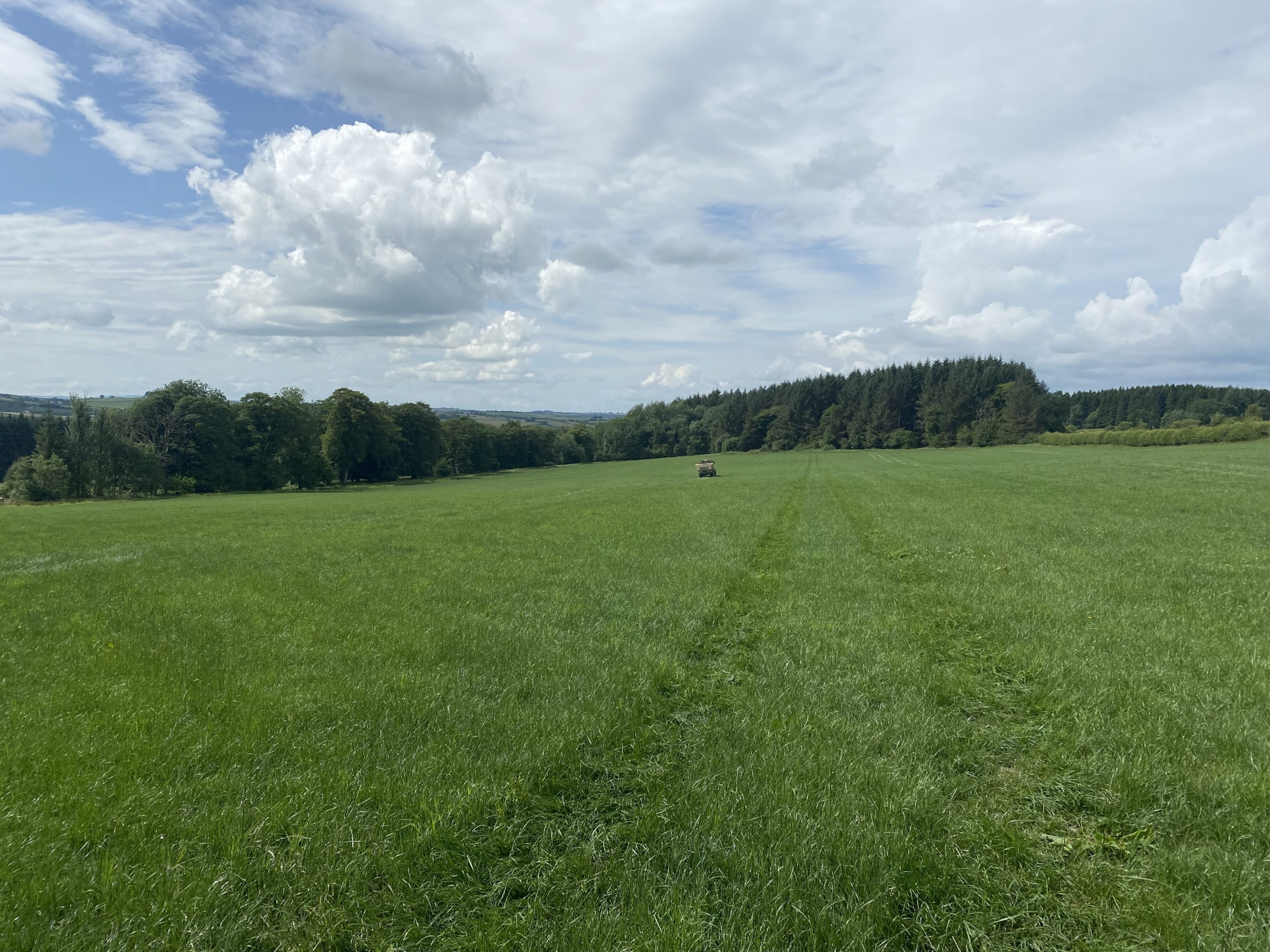A South-West dairy farmer has been trialling different rates of slurry and artificial fertiliser in silage fields to see how he can optimise yields and reduce costs. With input prices remaining high, John Kerr at Woodhead Farm in Ayrshire wanted to see if he could maximise use of the slurry from his 180-head dairy herd to improve soil health and grass growth, which would at the same time help reduce his carbon footprint.
John, who farms 141 hectares of predominantly grass in partnership with his mother Anne, said:
“Grass and slurry are our cheapest and easiest resources to produce on the farm and we wanted to make sure we have the basics right so we can tweak what we are doing at different stages to get the most out of both. Slurry may have traditionally been regarded as a waste product that we needed to get rid of, but we are now seeing it as a very valuable nutrient-dense asset.”
It’s a virtuous circle, he added: “If the slurry is used properly, the soil thrives, the grass grows well and we can make best use of our biggest asset, grass. We are also conscious of the pressure to produce with less impact on the environment, which all this also helps us to do.”
Silage yield is affected by the pH and nutrient balance in the soil as well as the soil’s structure, the weather and fertiliser application. The majority of the value of applying slurry comes from its phosphorus (P) and potassium (K) content, which is a high requirement for silage growth, but silage also needs nitrogen to yield. Although slurry contains Nitrogen, in a conventional system, much of the yield of grass is driven by applications of artificial fertiliser.
Like most dairy farms, Woodhead Farm applies slurry prior to each cut of silage using manufactured fertiliser to balance the N, P and K required. Running the trials with Farming for a Better Climate (FFBC), an initiative run by SAC Consulting (part of Scotland’s Rural College, SRUC), John has created four trial plots on the farm applying each with 2,500 gallons per acre plus differing amounts of artificial fertiliser as well as one with no fertiliser.
Woodhead Farm’s slurry and soil was analysed at the start of the project and fertiliser was bought to rectify any deficiency.
As well as adding nitrogen to the soil through artificial fertiliser, the application method and timing influences nitrogen availability to the grass. By using a dribble bar with a flow meter and a tractor with autosteer (all part funded through a previous Scottish Government Sustainable Agriculture Capital Grant Scheme) accuracy of application is the key to success in terms of soil health.
“Where before accuracy was a challenge for slurry and fertiliser applications, it can now be done with ease with the system also keeping a record of applications, which is useful both for compliance but also for farm management purposes,” explains SAC Consultant Robert Ramsay, who is working with John on the project. “By using the best application method at the correct time, nitrogen uptake is maximised, applications in the Spring achieve best utilisation of slurry nutrients. When it is applied between February and April, which coincides with the natural grass growth pattern, there is good nitrogen efficiency.”
In the trials, the more artificial nitrogen that was applied, the silage yield was inevitably higher. However, that it’s important to see costs and returns in the round rather than in silos, says Robert:
“These trials have given some valuable insights to help John make management decisions around his silage crops and allowed him to do a cost analysis per tonne of fresh grass for each scenario. It’s important to look at it holistically. If you can reduce fertiliser applications by even a small amount, when multiplied over many acres and several cuts, a significant saving can be achieved in your total fertiliser bill. Conversely, that extra load could fill the pit for much needed organic fertiliser which makes it worth the spend.”
As a farmer himself, Robert says, the FFBC trials are deliberately farmer-friendly and can be replicated on any farm:
“We are often guilty of not challenging our systems or ourselves, but it’s something we could all be doing. By checking whether the soil is limiting the yield potential or using data to inform nutrient applications, we can be savvier with where we spend and save. It is not about making major changes but small shifts: getting the soil analysed, asking some basic questions and trying out different rates across one field. The benefits for the environment will naturally come with these changes.”
FFBC supports farmers to integrate pragmatic changes to reduce their environmental footprint as well as improve financial margins. This project at Woodhead Farm has highlighted the advantages of using more slurry to not only boost soil biology and the retention of nitrogen but the offsetting of synthetic inputs keeps emissions down.
The project has also raised other questions on where financial and environmental gains could be made. For example, could increasing yield save money on contractor costs and farm carbon emissions by cutting less acres? Could cutting less acres reduce pressure on grazing land allowing a stock increase or free up acres for another crop or reseeding? Would cutting less acres in later cuts help reduce the risk of soil damage from harvesting crops in variable weather conditions? Should we be collating information for nutrient management on a field basis rather than treating every field the same?

